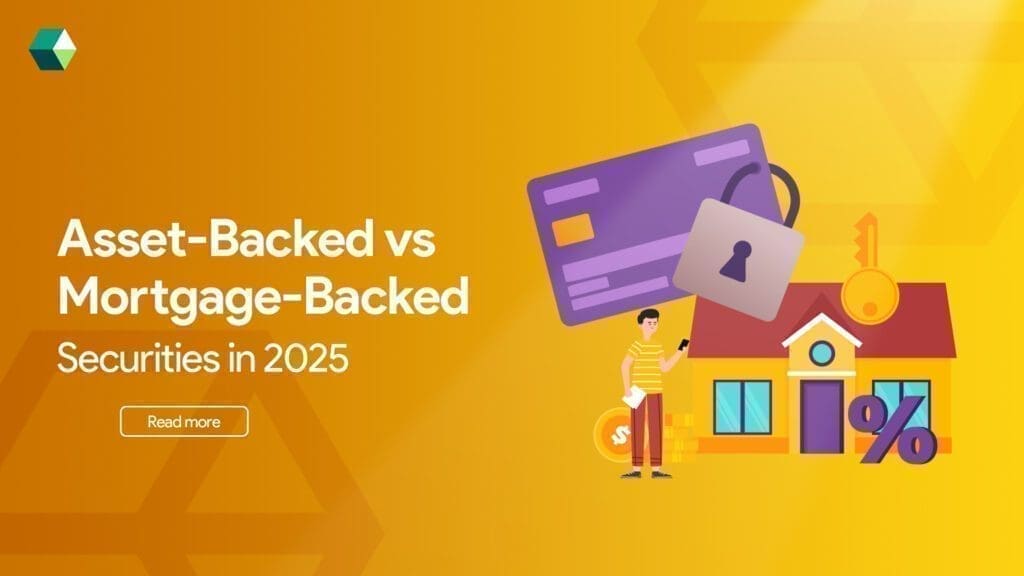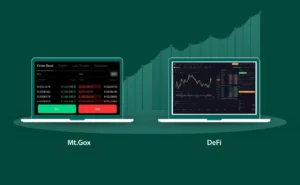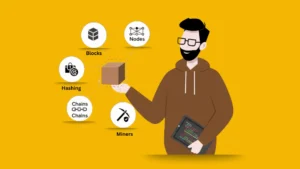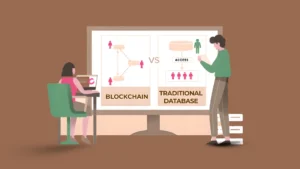
Asset-backed securities (ABS) are financial instruments backed by pools of consumer debt such as auto loans, credit card receivables, and student loans. These securities allow lenders to convert illiquid assets into tradable investments, providing liquidity while offering investors consistent returns. In 2025, the demand for ABS is rising as financial technologies like blockchain and real-world assets tokenization enhance transparency, accessibility, and efficiency in the market. This Investors Guide explores how ABS are evolving in today’s digital financial landscape, helping investors make informed decisions.
The growth of sectors like electric vehicles and green financing has further expanded the types of assets backing ABS, making them an increasingly popular choice for portfolio diversification. As ABS evolves with technological innovation, understanding its structure and performance is essential for investors aiming to balance risk and return in a rapidly changing financial landscape.
What Are Asset-Backed and Mortgage-Backed Securities?
Let’s start with the basics:
-
Asset-Backed Securities (ABS)
These are investment products backed by pools of non-mortgage financial assets. This could include credit card receivables, auto loans, student loans, or lease payments. Essentially, ABS transforms illiquid assets into tradable financial instruments.
-
Mortgage-Backed Securities (MBS)
These are a subset of ABS but specifically backed by home mortgages. Banks bundle thousands of individual home loans together, then sell pieces of this bundle to investors, who receive returns as homeowners repay their loans.
Both ABS and MBS serve the same purpose—help lenders get cash quickly and allow investors to earn returns from real-world cash flows.
Key Differences Between ABS and MBS
While ABS and MBS share a similar structural foundation, they differ in several important ways:
-
Decentralized Public Key Infrastructure (DPKI)
DPKI provides a secure and tamper-proof identity and authentication system that operates without relying on centralized certificate authorities. By distributing trust across the network, it minimizes the risk of single points of failure and enables more resilient digital identities for both individuals and devices in a decentralized ecosystem.
-
Backing Assets
For the auto loans that back some ABS, auto loan servicing software helps lenders manage accounts efficiently, track payments, and reduce risk. In contrast, Mortgage-Backed Securities (MBS) are backed specifically by residential or commercial mortgages.
-
Risk Profile
The risk associated with ABS largely depends on the creditworthiness of individual consumers. For MBS, the risk is tied more closely to the overall performance and stability of the housing market.
-
Prepayment Risk
ABS generally carries a lower prepayment risk since the underlying consumer loans tend to follow fixed repayment schedules. MBS, however, is more susceptible to prepayment risk, as homeowners may refinance or pay off their mortgages early.
-
Maturity Period
ABS usually has a shorter maturity period, ranging between 1 to 5 years. MBS, on the other hand, is considered a long-term investment, with maturities often stretching from 10 to 30 years.
-
Common Issuers
ABS are often issued by financial institutions, auto manufacturers, and fintech lending companies. MBS are typically issued by banks, mortgage lenders, and sometimes government-sponsored enterprises or agencies.
Types of Assets Backing ABS and MBS in 2025
In 2025, asset tokenization providers are making it easier to securitize a wider variety of real-world assets. This trend is influencing the makeup of both ABS and MBS.
-
For ABS
Auto loans continue to be a key component of asset-backed securities, with the rapid growth in electric vehicle (EV) sales contributing to a rise in auto loan-backed instruments. Student loans also remain a significant category, particularly in countries like the United States where higher education costs are high. Another major contributor is credit card receivables, which have seen an uptick due to increased online consumer spending. Additionally, green financing receivables are gaining traction, with loans being issued for solar panel installations, home battery storage systems, and other sustainable infrastructure projects.
Investors Guide resources are increasingly focusing on these diverse categories to help identify emerging opportunities. These diverse asset types reflect the evolving landscape of ABS in 2025 and offer valuable insights for any Investors Guide exploring future-proof investment strategies.
-
For MBS
Residential mortgages remain the most dominant type of mortgage-backed securities (MBS), but in 2025, they are becoming increasingly digitized and tokenized, making them more accessible and transparent for investors. This shift represents a crucial development in any Investors Guide to modern financial instruments. Alongside residential offerings, commercial real estate-backed securities (CMBS) are also gaining momentum.
These are typically supported by income-generating properties such as office buildings, warehouses, and retail centers, with notable growth occurring in emerging markets like India and Southeast Asia. This expansion reflects the global diversification and modernization of MBS offerings and should be a key focus in any comprehensive Investors Guide to real estate-backed securities.
Market Trends and Investment Performance in 2025
2025 is shaping up to be a transformative year for ABS and MBS markets. Key trends include:
-
Tokenization of Real-World Assets
Thanks to advancements in blockchain, tokenized asset offering development service are turning everything from mortgage pools to consumer loan portfolios into tokenized securities. This makes it easier to trade globally, with more transparency and liquidity.
-
Global Growth
The asset-backed securities (ABS) market is experiencing significant growth in regions like Asia and Latin America, driven by the rapid expansion of alternative lending platforms. At the same time, mortgage-backed securities (MBS) markets in the U.S. and Europe are showing signs of stabilization. This trend is largely attributed to steady interest rates and a recovering housing market in the aftermath of the pandemic.
-
Performance
Asset-backed securities (ABS) linked to auto loans and credit card receivables are currently offering attractive yields ranging from 5% to 8%. In comparison, mortgage-backed securities (MBS) backed by prime mortgages provide slightly lower yields, typically between 3% and 6%. However, MBS investments come with higher duration risk, making them more sensitive to interest rate fluctuations.
Regulatory Landscape for ABS and MBS in 2025
In 2025, regulation has become more standardized across jurisdictions, especially for tokenized asset offerings. Here’s what you need to know:
-
Global Harmonization
1- Financial regulators in the U.S., UK, EU, and India are working together to create frameworks for digital securities.
2- Tokenized ABS and MBS must now follow Know Your Customer (KYC), Anti-Money Laundering (AML), and investor protection rules.
-
Increased Oversight
1- Issuers must provide real-time disclosures and use transparent smart contracts.
2- The use of blockchain ledgers is now encouraged by regulators to reduce fraud and improve traceability.
This tighter oversight is making ABS and MBS more attractive to institutional investors.
Technological Innovations Impacting ABS and MBS
The rise of blockchain and Web3 technologies is rewriting the rules for traditional finance. In 2025, key innovations include:
-
Tokenized Asset Platforms
Platforms developed by leading Asset Tokenization Providers allow instant issuance, fractional ownership, and global trading of ABS and MBS.
-
Smart Contracts
These automate interest payments, compliance checks, and even liquidation processes, reducing middlemen and operational costs.
-
AI and Predictive Analytics
AI helps assess borrower risk more accurately, ensuring better asset selection in ABS and MBS pools.
-
Defi Integration
DeFi protocols are now offering ABS/MBS-like investment products through decentralized platforms, democratizing access to these markets.
Investors Guide – Which Is Better for You in 2025 – ABS or MBS?
Your choice between ABS and MBS ultimately depends on your investment goals. If you’re seeking higher yields and more diversified risk, Asset-Backed Securities (ABS)—particularly those supported by auto loans or green financing—can be a smart option. On the other hand, if you’re looking for stable returns and exposure to the real estate market, Mortgage-Backed Securities (MBS), especially tokenized versions offering fractional ownership, may be more suitable.
For investors already working with a tokenized asset offering development service , building a hybrid portfolio that includes both ABS and MBS can offer balanced exposure. In today’s market, diversification is essential, and many investors are leveraging blockchain platforms to invest in tokenized real-world assets across multiple asset classes for greater transparency, liquidity, and control.
Ready to Diversify Your Portfolio with ABS or MBS?
Partner with a reliable tokenized asset offering development service to ensure your investments are secure, compliant, and future-proof. Looking to get started with ABS and MBS investments backed by real-world assets? Explore secure and scalable solutions offered by the leading asset tokenization providers in 2025—and unlock new opportunities in the world of decentralized finance.






